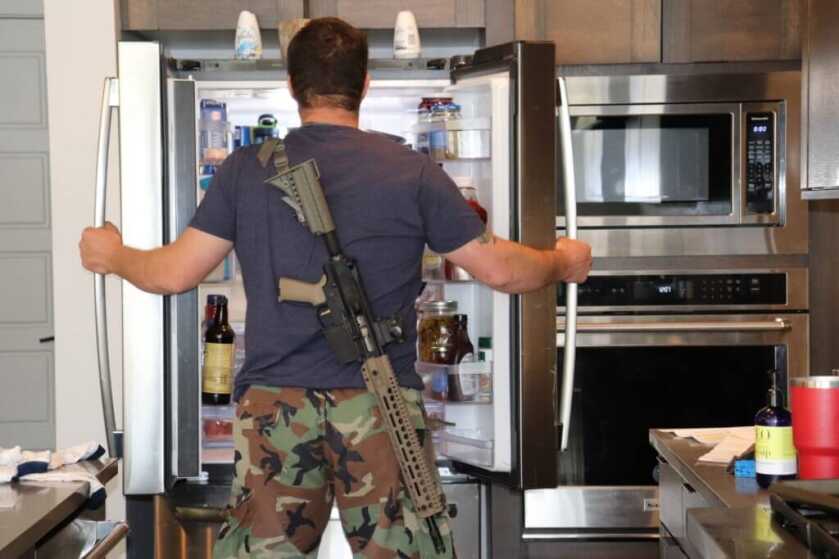
Last week, we talked at length about options for those new to firearms. With a little bit of luck, you grabbed one before the background check system was overwhelmed and the stock was gone. Here you are, with your fancy new gun in the box on your nightstand. So, now what?
Glad you asked. You see, in many ways, just having a firearm and some bullets are not enough. It really depends on why you bought the gun in the first place (daily carry, home defense, a combination of the two).
Other episodes in this series:
- Clay on Survival Foods for COVID-19 Crisis (How to Avoid Eating Your Pets)
- Clay on Staying Fit and Sane During Quarantine
- Clay’s COVID-19 Gun Buying Guide for Noobs
- Clay’s COVID-19 Gun Buying Guide for Noobs Part II: Holsters & Slings
- Clay’s COVID-19 Gun Buying Guide for Noobs Part III: Flashlights & Broadswords
- Clay’s COVID-19 Gun Buying Guide for Noobs Part IV: Dinosaur Tech and Space Age Sights
In normal times, for a purely home defense situation, a secured gun in the closet/ nightstand with some ammo might be enough. Provided that you never needed to carry that gun outside the home, or felt like keeping it close at hand through the day. Even for those situations, some of what we are talking about today would be nice to have. And for literally anything outside your own four walls, necessary.
As the general security situation deteriorates, you may want to keep your firearm close to you throughout the day. You may also very much want to take it with you on excursions for supplies.
Just yesterday I saw reports of grocery bags being stolen out of people’s hands in parking lots. As the supply lines are stretched further, I expect those happenings to increase. And if it gets really ugly, holding onto your rations may actually be a life and death situation.
We are going to break this down by holsters and slings, which also reflects the vast majority of the questions I am receiving these days.
Holsters
First, holsters! You may have ended up with a pistol as your primary weapon, despite advice to the contrary. Or maybe you got lucky and got one to supplement your rifle. Either way, you need to understand this. A pistol is the most dangerous weapon in the world. To you. If you don’t have some training, which for this article we are assuming.

All the things that make a pistol awesome for convenience and transportability also make it incredibly easy to hurt yourself with. Now it is true, you can accidentally shoot yourself with a rifle. And while no bullet wound is a non-serious matter, that rifle wound is most likely to be in your foot or lower leg. The shorter barrel on a pistol makes it all the more possible to accidentally shoot yourself somewhere much more vital, like the hips, upper thigh, or head. I’ve even seen the aftermath of a man that tripped and shot himself in the heart.
The safest way to keep a pistol near you or on your person is in a holster, one that absolutely covers the trigger. Not only does this prevent you from carrying the pistol in an unsafe manner, but it also cuts down on the times you have to handle it while it is loaded. (We will cover handling in a future segment, logistics dictate we do the supply side first.) You can’t very well knock your hand cannon off the counter making a sandwich if it is glued to your hip.
I would also like to add one to the safety rules, that all the experienced gun guys know. DO NOT EVER TRY TO CATCH A FALLING WEAPON. It won’t go off if it hits the floor, at least if it was made since 1989. Even an older gun is unlikely to discharge in a fall, without hitting at a certain angle and speed. But every gun is going to discharge if you hit the trigger in an attempt to catch it. Jet Li couldn’t be trusted to catch a falling gun perfectly, much less you or I with a mustard knife in our other hand.
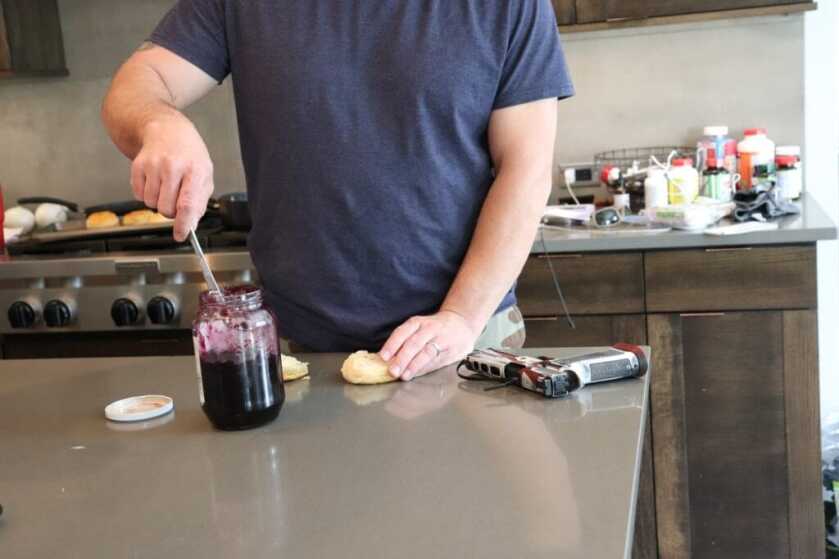
So what kind of holster do you want? This comes down to two options. Inside-the-waistband (IWB) or Outside-the-waistband (OWB). With some exceptions, including how your dress, IWB is what most of us use for concealed carry. And OWB is exposed, like the holsters cops carry. (Things like a Galco Yaqui slide are both.) They both serve a purpose, and both have strengths.
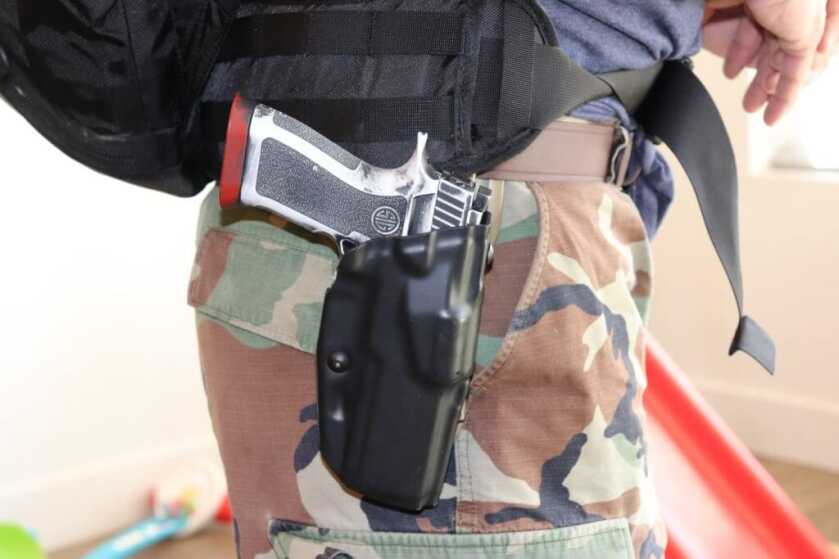
An IWB is less comfortable in overall terms. If you are just keeping your gun handy in the house, an IWB is not as fun sitting in your lazy boy or walking in circles around the island. It also has a slower draw time, as you must move your shirt out of the way to get to it. And on a survival note, it also has a disadvantage of being very uncomfortable underneath a pack waist strap.
SEE ALSO: Clay’s COVID-19 Gun Buying Guide for Noobs
The strengths of an IWB are in its usefulness. Some states dictate that firearms carried in public places must be concealed. It is also sometimes a tactical advantage to have a surprise weapon, as opposed to an obvious one.
We should also think in terms of what my legal team calls Minecraft world. Let’s say you are playing the computer game Minecraft, and approaching a grocery store overrun by howling lunatics fighting for the last roll of Charmin. The local Minecraft authorities have declared an emergency measure to suspend concealed carry rights for those even with a license. Your odds of getting frisked are very slim, but your odds of getting stabbed with a broken whiskey bottle are high. In this particular Minecraft scenario, prudence would suggest it is better to be judged by twelve than carried by six.
All of us with decades of concealed carry time have spent piles of money on useless holsters, looking for that magic combination of comfort, durability, and functionality. You don’t have that kind of time. So I am going to recommend my go-to, my favorite for over ten years. Go with a Crossbreed, either the Supertuck or Reckoning.
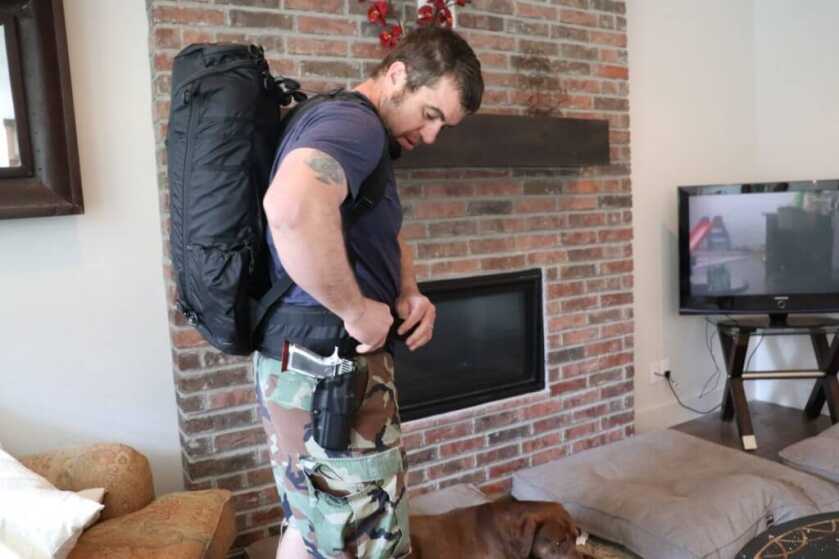
An outside the waistband, as we discussed, is still going to be more comfortable. If you ended up with a full-size gun, it is going to be by orders of magnitude more comfortable. I live in an open-carry state, as do many of you. A Dirty Harry piece in a drop leg also sends a pretty strong message of “Don’t try me, punk,” which has a value in its own right. It is also faster to deploy and works well with a ruck or other stuff around your waist.
It does, however, have downsides. It lets everyone know you are armed, which may make you the first victim in a shooting. While it might deter some criminals, others might see it as an object of value worth taking. As well as it is impossible to carry in this manner if the authorities say no unless you happen to also have a badge.
For an OWB, I also strongly recommend something with a retention device. For an IWB, the pressure of your belt against the holster will let you do some surprisingly athletic movements while the gun stays put. An OWB, without a retention device, might surprise you. It would suck to run 30 feet and realize your gun fell out at 5 feet after you started, but I’ve seen it happen. If you choose not to use a retention holster, at least get in the habit of using your dominant hand to secure your gun while moving.
SEE ALSO: Clay on Staying Fit and Sane During Quarantine
For an OWB, I also have a favorite. It isn’t cheap, but its the best I’ve seen. I prefer a Safariland ALS holster. They are tough as nails, secure, and disabling the retention is very instinctive. Your thumb does it naturally, by far the best design I have seen. For added comfort, put it on a drop offset, via the Safariland Universal Belt Loop .
The Ultimate Sling
For your rifle or shotgun, I have one single recommendation, that I have been using since 2004. Often imitated, never duplicated, the original is the best.
Developed by famed gunfighter Kyle Lamb, one could say that the VTAC sling is part and parcel of modern rifle technique. It is required equipment in at least two of the world’s top military Counter-Terrorism schools, which should be all the endorsement it needs.

Why does your long gun need a sling? Good question. Because it is a pain in the butt to keep near you always without it. If you don’t believe me, do an experiment. Go pick up your gun, and walk around your house for an hour. Without setting it down.
Not fun, right? That is what it is going to be like if you have to go to the store. Or for a walk in the woods. Or, God forbid, you have to leave your area on foot.
SEE ALSO: Clay on Survival Foods for COVID-19 Crisis (How to Avoid Eating Your Pets)
In addition to that, the VTAC sling actually enhances your ability to shoot. Much like the original military shooting slings, the VTAC’s ability to tighten up against your body actually makes you more stable. Not to mention keeps your muscles fresher to throw that gun up, should the situation arise.
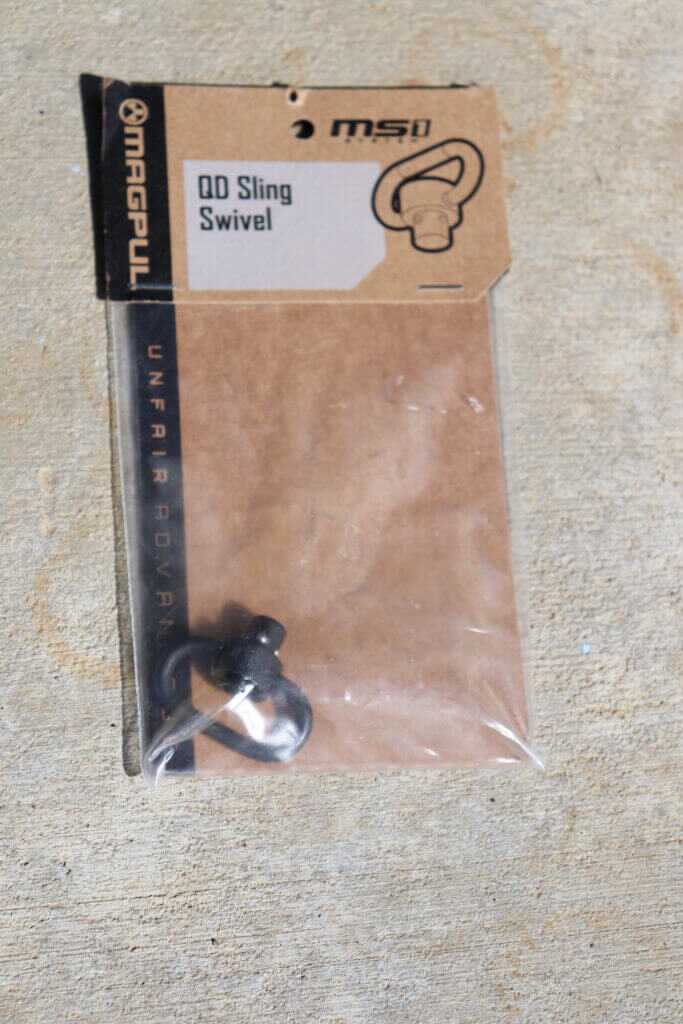
To attach your VTAC sling, I also recommend at least one Quick-Detach sling swivel. You will often see these QD holes on either the buttstock or forend as a built-in feature. It costs more, but I often run a QD swivel on both ends. That is mostly because I do gun reviews for a living, so my sling is on a new gun every week.
In the military, we ran a minimum of one in case you were hung up in an aircraft. Easy solution, that you would remember under pressure. For you, I mostly recommend it because either the front or back of your gun is likely to have it built-in. If not, no sweat. You can either buy a rail attaching device or improvise one. If you choose to McGuyver one, just be aware that it will eventually wear out. Something to keep an eye on as you do your weapons maintenance.
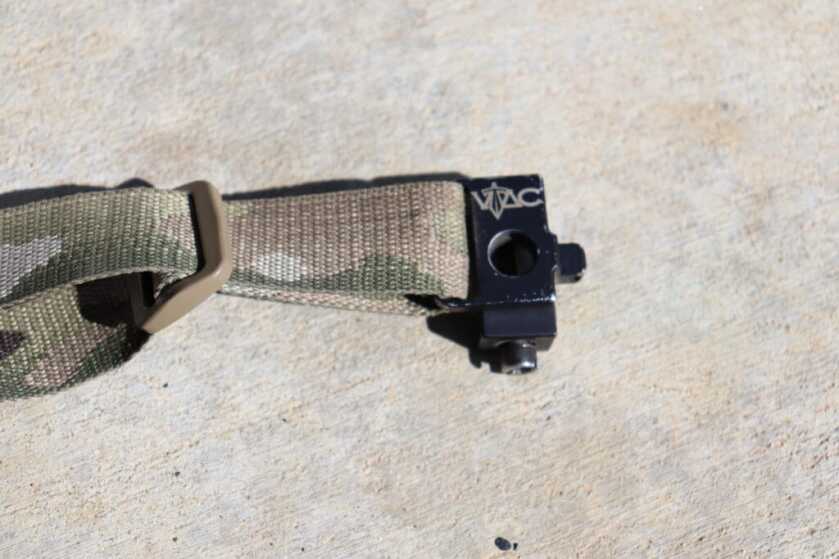
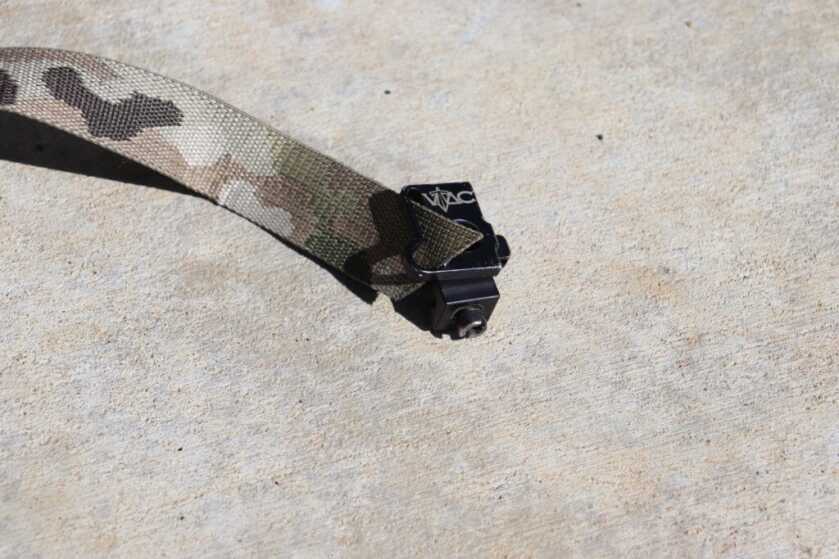
Remember what we say in the business. Stay strapped or get clapped. Good luck, and I’ll see you again next week to talk about flashlights.

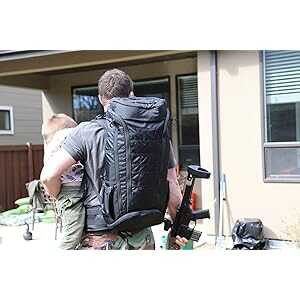
I always appreciate Clay’s perspective and experience on these issues. I’ll have to revisit my slings and holsters and make sure I actually have ones that will be functional should the need arise.
Quit stepping on my rights.
Sitting here, I just pulled out my magpul sling and put it on my scout squad m1a. Threw a 20 rounder in there, and proceeded to make a tuna sandwich and clean the kitchen. That gets heavy quickly. Out at the range, I don’t ding the cabinets and the hardwood floor.
Shoulder holsters. A viable option. Fast access, pretty comfortable too with spare mags or speed loaders on the off side to balance the weight. They’re made for almost any handgun as well. Now you can carry a backup if you’re the type to take it that far.
“…some bullets…”? No cartridges or rounds. That’s not going to veto helpful.
Words have meaning. The anti-Rights people are skilled in using incorrect terms to erode our Rights. Let’s not help them.
Thank you.
Rick – Correct nomenclature is important in certain discussions, but, “hand cannon”, “smoke pole”, “the little
woman”, “the ball and chain” etc. ad nauseam are references that most are comfortable in using, as well as
being easily understood by the listener. It is apparent from your reference you understood the subject being
discussed as is also apparent your challenge seems counterproductive to the “meat” of the article.
The title of this article is “Clay’s COVID-19 Gun Buying Guide for Noobs Part II” notice the word,’Noobs’. A person buying his first gun is more likely to understand the term, ‘bullets’ as opposed to the term cartridges or rounds.
I’m still scratching my head trying to figure out how the term bullets is going to be more useful to the “anti-rights” people than cartridges or rounds?????